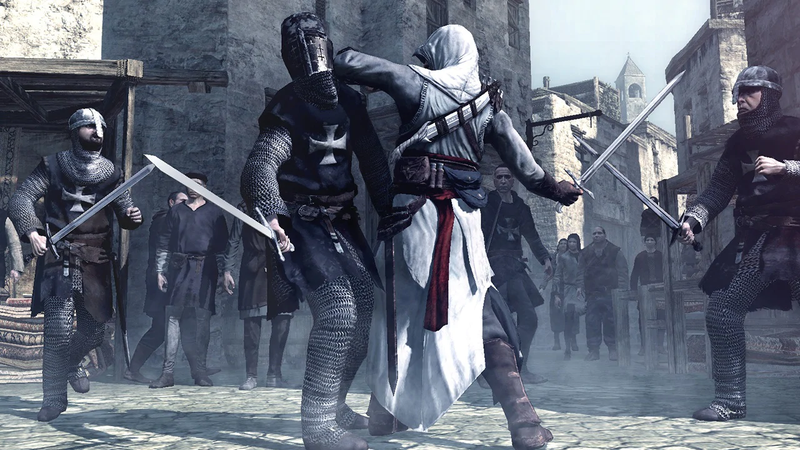An industrious fan with a lot of time on their hands is going through the Assassin’s Creed games and fact checking the events that take place in them. It makes for good reading.
In Reddit threads about Assassin’s Creed, Assassin’s Creed II, and Assassin’s Creed: Unity, user VestigialLlama4 has gone through the major events of these AC games and pointed out where they do and do not diverge from generally agreed upon historical fact.
Crucially, this fact checking is performed via Ubisoft’s own rules. As the user writes in the header for the threads:
I am going to try and avoid being pedantic. I am going to be fair if I think/judge that the games are fair. I am going to do it by using Ubisoft’s own rules:
1. The 30-second wikipedia rule that Desilets/Jade Raymond and others talked about. If something can be checked in 30secs and can be verified then AC will stick to the facts but anything beyond that they will change.
2. If the games provide a truer and more accurate picture than the most famous Pop-Culture View. For instance, if you are making a game about pirates, you have to be more accurate than Johnny Depp movies, that’s the simple low bar. In am also going to be fair in identifying what I think people’s familiar idea of a period is at the start of each game so that people know what my standards are.
The “30 second rule,” by the way, is explained in an interview with Patrice Désilets over at USGamer:
“If it takes less than 30 seconds to find it on Wikipedia, then it should be the truth,” Désilets explains. “If it takes you three weeks in the old books in Oxford, then who cares?”
These are two big orienting frames, and what follows in the threads do sometimes tend to actually read as pedantic critiques. However, they are more often simply interesting points of friction between actual history and what can be easily communicated to players or adapted into a video game.


For example, there is a discussion of a specific event in Assassin’s Creed II. The poster writes:
The Pazzi attack on the Medici didn’t happen outside il Duomo, it happened inside it. Lorenzo hid in the sacristry of the Church. The part where the entire city goes on alert and panic when the Medici are attacked is accurate however. Francesco de’Pazzi, Archbishop Salviatti, and Bernardo Baroncelli were all hanged from the windows of Palazzo Vecchio, rather than just Francesco de’Pazzi as we see in this game. The conspirators didn’t flee to San Gimignano. They went to nearby villages and towns, were caught, identified and brought back to Florence and executed in public, in very graphic and gruesome fashion.
And these are all great points! They provide a great place for us to think about the kinds of decisions that a game studio has to make when it comes to developing a game that is at least based in history. An indoor area changes what kind of assassin-y interactions you can have, and might require a lot of level design resources and team members. A big sprawling story about people fleeing, being caught, and being publicly executed might take way too much in-game story time to tell.
The Assassin’s Creed games don’t appear from nowhere. They’re made by people who are making choices about how to take historical events and cram them into a game format that has sneaking, battling, and assassinating. History is their playground, after all.
These threads are interesting investigations into the history of the Assassin’s Creed games because they’re illustrative of why “real” history might not really fit into the form of a video game (or a film or a television show). And I like that someone is doing the work to point out the moments of adaptation that are happening there.

